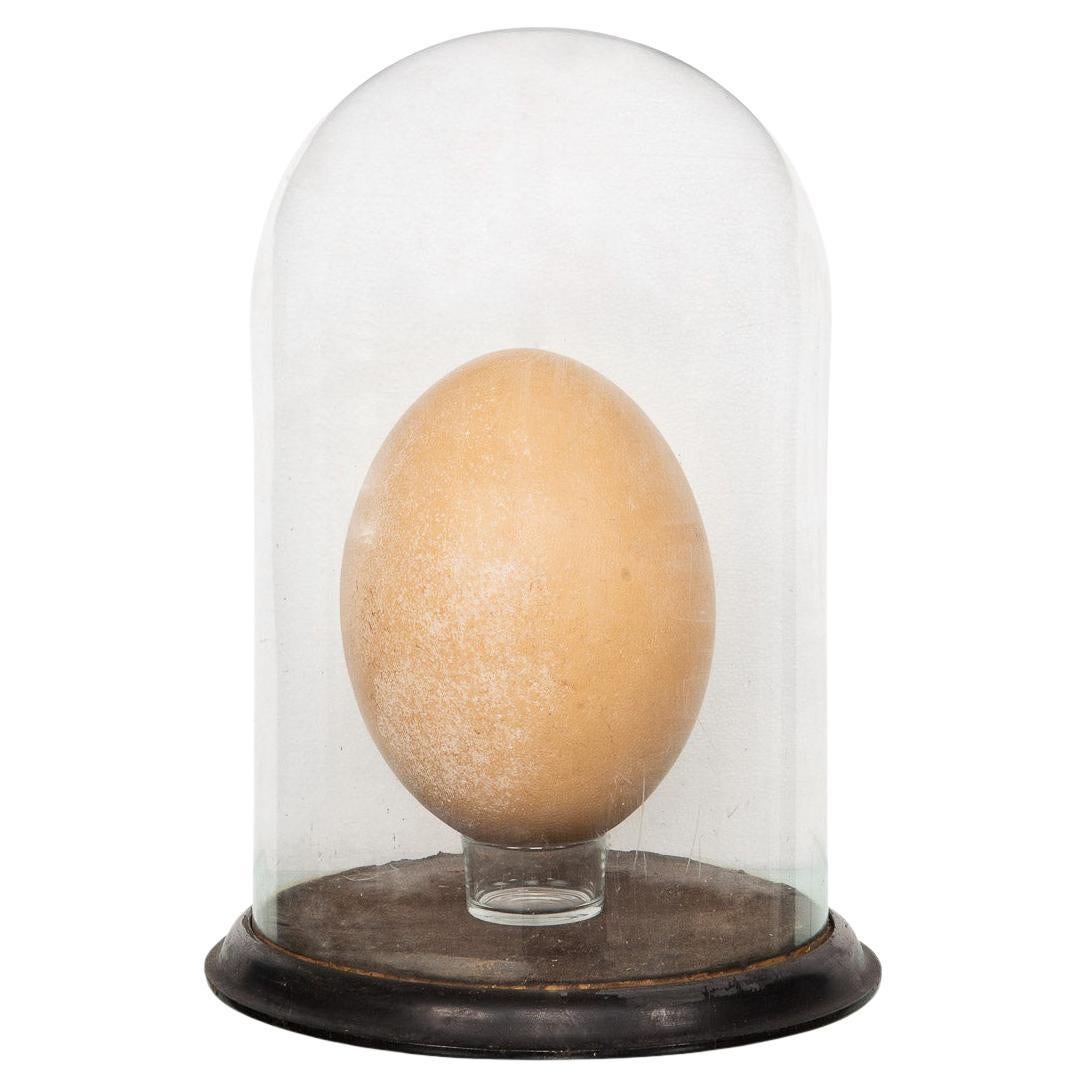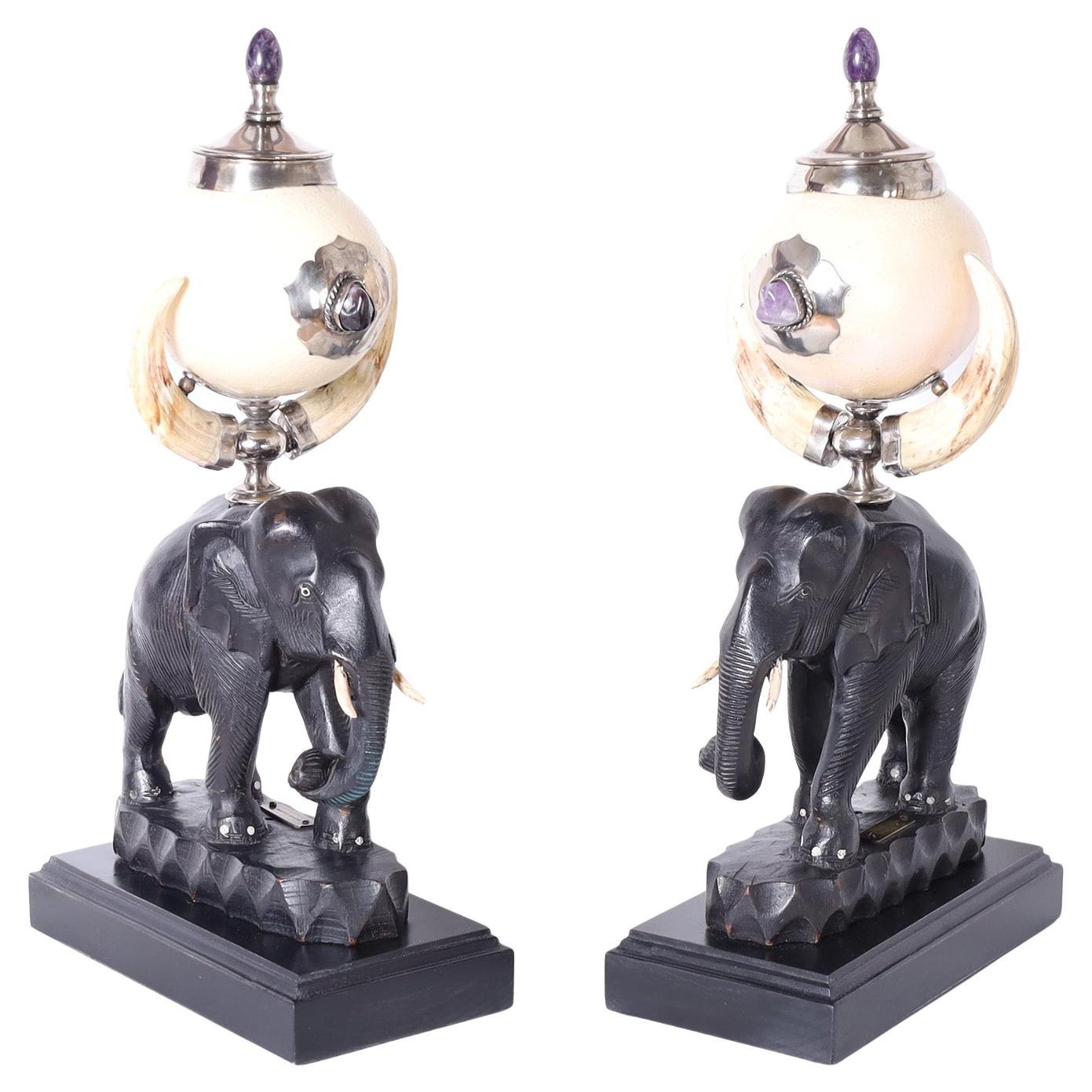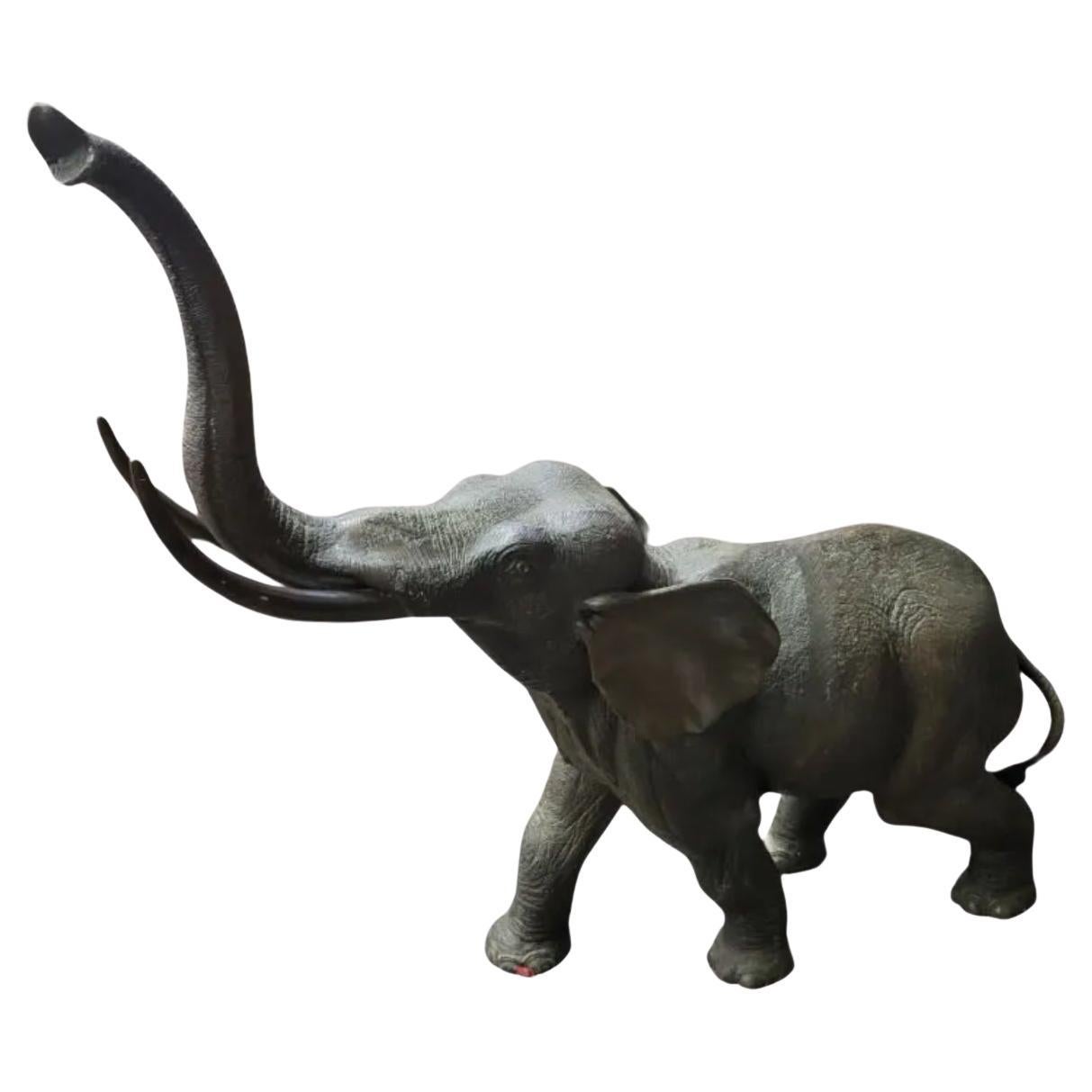Items Similar to Giant Egg of the Extinct 'Elephant Bird'
Video Loading
Want more images or videos?
Request additional images or videos from the seller
1 of 9
Giant Egg of the Extinct 'Elephant Bird'
About the Item
An exceptionally well preserved, unhatched egg of the Giant elephant bird, Aepyornis maximus.
The now-extinct Aepyornis maximus, or elephant bird, was a quintessentially Malagasy bird, illustrative of the unique fauna and flora which developed on the island of Madagascar after the island split from the Indian subcontinent around 88 million years ago. The bird’s Malagasy name was vorompatra (or vouropatra), meaning "marsh bird" or “bird of the Ampatres”. A truly enormous creature, it measured over 3 meters in height and could weigh up to 540 kilograms. A ratite, Aepyornis maximus was a flightless and wingless herbivore. Its large size and inability to fly might be the result of evolving on an isolated island with few predators. Instead of wings, elephant birds had extremely strong legs and could run at very high speeds. However, despite their appearance and habits, their closest living relative is not the ostrich but the kiwi bird.
Aepyornis first appeared during the Pleistocene and was widespread from the northern to southern tip of the island of Madagascar. The precise date of its extinction is unknown, with some first-hand sightings of the bird dating to the seventeenth century.
One of the first supposed references to Aepyornis can be found in the Chinese geographical treatise Lingwai Daida, which was written by Zhou Qufei in the Twelfth Century. In the treatise, the author tells of a large island off Africa with birds so large that their quills could be used as water reservoirs. In 1298, Marco Polo recounted seeing near Madagascar a bird of prey so big that it could carry an elephant in its talons. This bird was known as the roc, or rukh. A similar story was later told by the Moroccan explorer Ibn Battuta, who claims to have seen the roc flying over the China Sea in 1340. It is even said that the Emperor of the Mongol Kublai Khan (1215-1294) sent messengers to Madagascar after having heard of the roc. The messengers brought back the Great Khan a gigantic bird feather, now believed to have been a raffia palm. In the fifteenth century, Italian cartographer Fra Mauro mentioned the roc on his map of the world, where it is described as coming from the island of Diab (most likely Madagascar). It is so big that it can “[carry] away an elephant or any other great animal" and has eggs “as big as a seven-gallon cask.”
Of course, Aepyornis maximus was flightless and no elephants lived in Madagascar, but it is undoubtable that its extraordinarily large eggs, which were seen by foreign sailors and traders in Madagascar, inspired numerous tales about the legendary roc. The name “elephant bird” might even derive from these stories.
Height: 28.5 cm (11.2 inches)
Provenance:
- Collected by André Goua (1901-1997) whilst working for the French Department of Mining Operations and Research in Antananarivo, Madagascar, between 1955 and 1965.
- Thence by descent.
- Dimensions:Height: 11.23 in (28.5 cm)Diameter: 7.76 in (19.7 cm)
- Materials and Techniques:
- Place of Origin:
- Period:
- Date of Manufacture:1955-1965
- Condition:Wear consistent with age and use.
- Seller Location:London, GB
- Reference Number:
About the Seller
5.0
Recognized Seller
These prestigious sellers are industry leaders and represent the highest echelon for item quality and design.
Established in 2008
1stDibs seller since 2014
100 sales on 1stDibs
Typical response time: 7 hours
Associations
LAPADA - The Association of Arts & Antiques DealersInternational Confederation of Art and Antique Dealers' AssociationsThe British Antique Dealers' Association
- ShippingRetrieving quote...Ships From: London, United Kingdom
- Return PolicyA return for this item may be initiated within 14 days of delivery.
More From This SellerView All
- Cross Section of the Imilac MeteoriteLocated in London, GB“This 282 g interior section of the Imilac pallasite shows a large range of olivine grain sizes – there are coarse grains, grain clusters and fine-grained, crushed olivine debris. All of the olivine grains are surrounded by a matrix of metallic iron-nickel derived from the top of a molten core of a differentiated asteroid.” Dr Alan E. Rubin, PhD Department of Earth, Planetary, and Space Sciences, UCLA Imilac - interior section Stony-iron, pallasite - PMG 8 1/4 inches (20.95 CM), 282 g This complete cross-sectional slice from the Imilac meteorite...Category
Antique 15th Century and Earlier Natural Specimens
MaterialsOther
- Cross Section of the Seymchan MeteoriteLocated in London, GBCross Section from the Seymchan Meteorite Pallasite Comprising less than 0.2% of all meteorites, pallasites, made up of an iron-nickel matrix inter...Category
Antique 15th Century and Earlier Russian Natural Specimens
MaterialsIron, Nickel
- Pre-Solar Stardust, a Piece of the Allende MeteoriteLocated in London, GBPre-Solar Stardust - A piece of the Allende Meteorite Carbonaceous Chondrite - CV3 Height 6.98 cm 280 g “This individual sample of the Allende CV3 carbonaceous chondrite shows ...Category
Antique 15th Century and Earlier Mexican Natural Specimens
MaterialsStone
- End-Cut from the Imilac MeteoriteLocated in London, GBImilac Meteorite End-Cut circa 4.5 Billion y/o Measures: 10 x 13 x 1 cm “This interior section of the Imilac pallasite shows a large range of olivine grain sizes there are coarse grains, grain clusters and fine-grained, crushed olivine debris. All of the olivine grains are surrounded by a matrix of metallic iron-nickel derived from the top of a molten core of a differentiated asteroid”. Dr Alan E. Rubin, PhD Department of Earth, Planetary, and Space Sciences...Category
Antique 15th Century and Earlier Chilean Natural Specimens
MaterialsIron, Nickel
- Large Leaf Fossil from the Green River FormationLocated in London, GBA large and beautifully preserved fossilised leaf from the Green River formation, a site which has brought forth some of the best-preserved fossi...Category
Antique 15th Century and Earlier North American Wall-mounted Sculptures
MaterialsOther
- Egyptian Head of a ManLocated in London, GBEgyptian head of a man, carved granite. 18th Dynasty, circa 1550-1292 B.C. Carved in beautiful dark granite, this head depicts an elite individual, perha...Category
Antique 15th Century and Earlier Egyptian Egyptian Busts
MaterialsGranite
You May Also Like
- Elephant bird eggLocated in 'S-HERTOGENBOSCH, NLElephant bird egg from Madagascar. The largest egg ever from a living creature; it is from the extinct elephant bird. Assembled from the shards of se...Category
Antique 15th Century and Earlier Malagasy Medieval Natural Specimens
MaterialsEggshell
- Pre-17th Century Extremely Rare & Complete Elephant Bird Egg, MadagascarLocated in Royal Tunbridge Wells, KentAn extremely rare elephant bird egg, completely intact. The Elephant Bird, formally categorised as Aepyornis Maximus, is an enormous flightless bird ...Category
Antique Early 17th Century Malagasy Taxidermy
MaterialsEggshell
- Pre-17th Century Extremely Rare & Complete Elephant Bird Egg, MadagascarLocated in Royal Tunbridge Wells, KentAn extremely rare elephant bird egg, completely intact. The Elephant Bird, formally categorised as Aepyornis Maximus, is an enormous flightless bird ...Category
Antique Early 17th Century Malagasy Taxidermy
MaterialsEggshell
- Pair of Ostrich Egg Urns on Carved ElephantsBy Anthony Redmile LondonLocated in Palm Beach, FLMid-century pair of Anthony Redmile urns crafted with an eccentric array of materials featuring amethyst stone, ostrich eggs, boar tusks and carved ebony all in a dramatic compositio...Category
20th Century English Mid-Century Modern Urns
MaterialsOstrich Eggshell, Hardwood
- Amazing Giant Western Bronze Elephant SculptureLocated in Newmanstown, PAVery unique and large bronze elephant sculpture. It is very skillfully done with a lot of nice details. A great accent piece for any room. Heigh...Category
Antique Early 1900s Animal Sculptures
MaterialsBronze
- Vintage Ostrich Egg Elephant Sculpture attributed to Anthony RedmileLocated in West Palm Beach, FLWhimsical elephant sculpture with ostrich egg body and brass head, legs and tail attributed to Anthony Redmile.Category
20th Century English Animal Sculptures
MaterialsBrass





